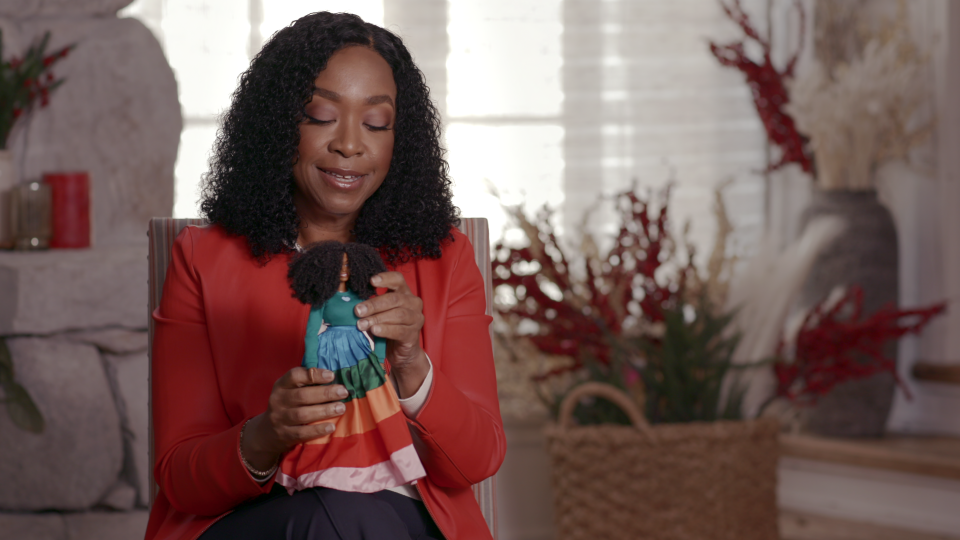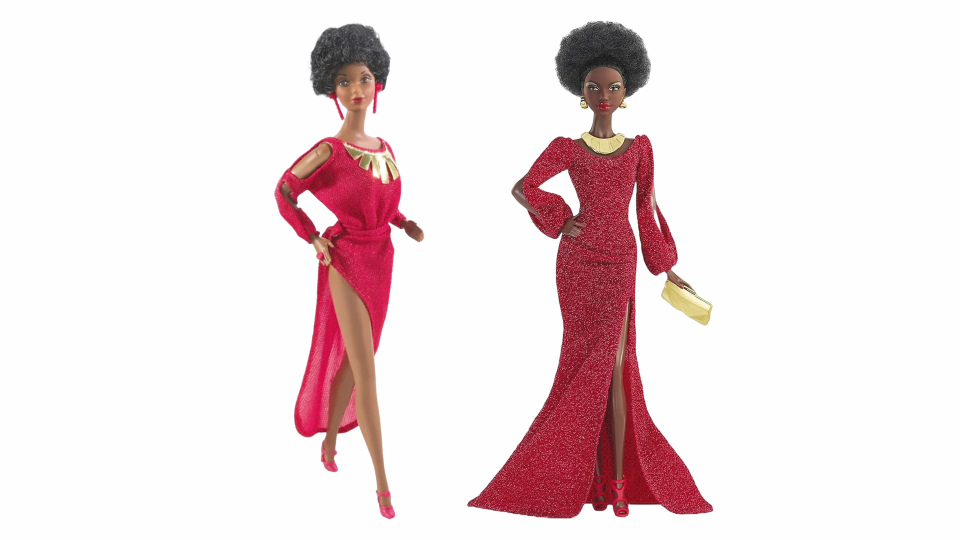Shonda Rhimes on first Black Barbie, star of Netflix documentary: 'She was amazing'
As a young girl in segregated Spartanburg, South Carolina, Kitty Black Perkins took a brown crayon to white paper dolls so their skin would match hers.
“I seldom saw white people, and so it was all I knew,” says the 76-year-old. “So my instinct when I got a paper doll was to make her look like me.”
Years later, as a chief designer of Mattel’s iconic Barbie doll line, Black Perkins created the first Black Barbie so other children could see themselves in the toy introduced in 1959.
Mattel began offering Christie, a Black friend of Barbie’s, in 1968, but an official Black Barbie didn’t arrive until 1980. The doll's origin story is chronicled in the documentary “Black Barbie” (streaming now on Netflix), which examines the far-reaching impact of representation.
Join our Watch Party! Sign up to receive USA TODAY's movie and TV recommendations right in your inbox
“If you don't see yourself in what is presented to you all the time as being, ‘This is what is good, this is what is pretty, this is what is smart, this is what is usual,’ and you never see any representations of yourself, what does that mean you are?” executive producer Shonda Rhimes says. “I think it can be very damaging.”
The film focuses on the contributions of Black Perkins and doll designer Stacey McBride Irby, as well as Mattel employee Beulah Mae Mitchell, who began her 44-year career at Mattel on the production line in 1955. She asked Barbie inventor Ruth Handler about a Black Barbie in the early '60s.
Barbie's evolution: An illustrated look
Rhimes, the inspiration for two Barbies, says her mother had a rule that they wouldn’t have white dolls in their home.
“I was really fortunate that I grew up with Black dolls, and I grew up playing with those dolls,” says Rhimes, 54. “My dolls did everything I ever wanted to do. They skied all over the world, and they had amazing jobs" as doctors, lawyers and government officials. "I always wanted my Barbie to have a plane because I wanted her to fly someplace. The dolls could do anything, and that was exciting.”
Rhimes sees the influence of her childhood play in her trailblazing TV career. She says in “Black Barbie,” “If Kerry Washington in ‘Scandal’ is not a Black Barbie, down to the outfits and the dress-up and the clothes, I don’t know what is really.”

Rhimes remembers being in awe of Black Barbie's style.
“I thought she was amazing, and she had this great outfit on with a slit up the side,” Rhimes says. “She was very glamorous to me.”
The first Black Barbie was meant to be the opposite of the original Barbie in every way, Black Perkins says. She and team members from hair design, sculpting, face painting and engineering discussed the doll’s skin tone and decided to give Black Barbie more voluptuous lips, a fuller nose and a curvier form than her white counterpart.
Shania Twain: Her iconic 'Man, I Feel Like a Woman' look becomes a Barbie

Black Perkins took inspiration from Diana Ross and fashion designer Bob Mackie’s avant-garde creations and considered her own preferences. Black Perkins liked red, the color of Black Barbie’s gown, and sported a short, natural hairstyle at the time.
While designing, Black Perkins felt pressure to satisfy the market and the young girl she carried inside of herself who grew up yearning for a Black doll.
“I wanted her to be beautiful,” Black Perkins says. “I wanted her to be someone that the child would really want to play with, or that they would want to even collect.”
Spoilers! Does this big 'Bridgerton' twist signal queer romance to come?
A focus group of kids who tested a prototype let Black Perkins know quickly that she’d accomplished her mission.
“The first thing they said was that she looked like them, and they were real excited,” Black Perkins recalls. “They wanted just to play with her.”
Once the doll hit the market, Black children could be the stars of their own Barbie stories.
“Barbie had accessories to her, and Christie was an accessory, just like Ken is an accessory,” says Black Perkins. “These were dolls that were developed so that Barbie could play out a lifestyle. The reason it was important to give Black Barbie the Barbie name is because it elevated the doll to the point where she stood on her own.”
Looking for reliable streaming options to catch your favorite Netflix shows? Check out USA TODAY Home Internet for broadband service plans in your area.
This article originally appeared on USA TODAY: 'Black Barbie' documentary: Shonda Rhimes unboxes doll's impact


